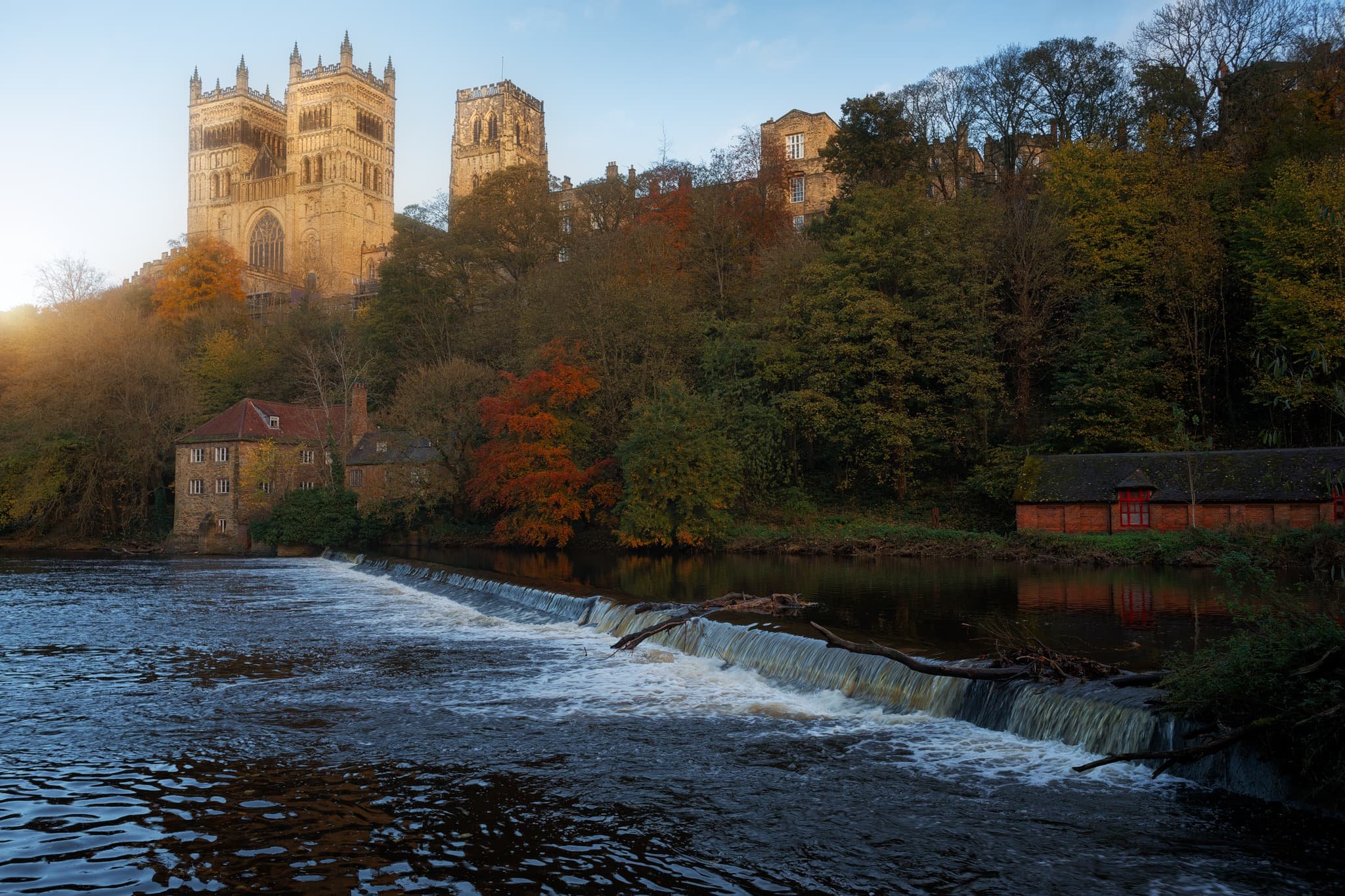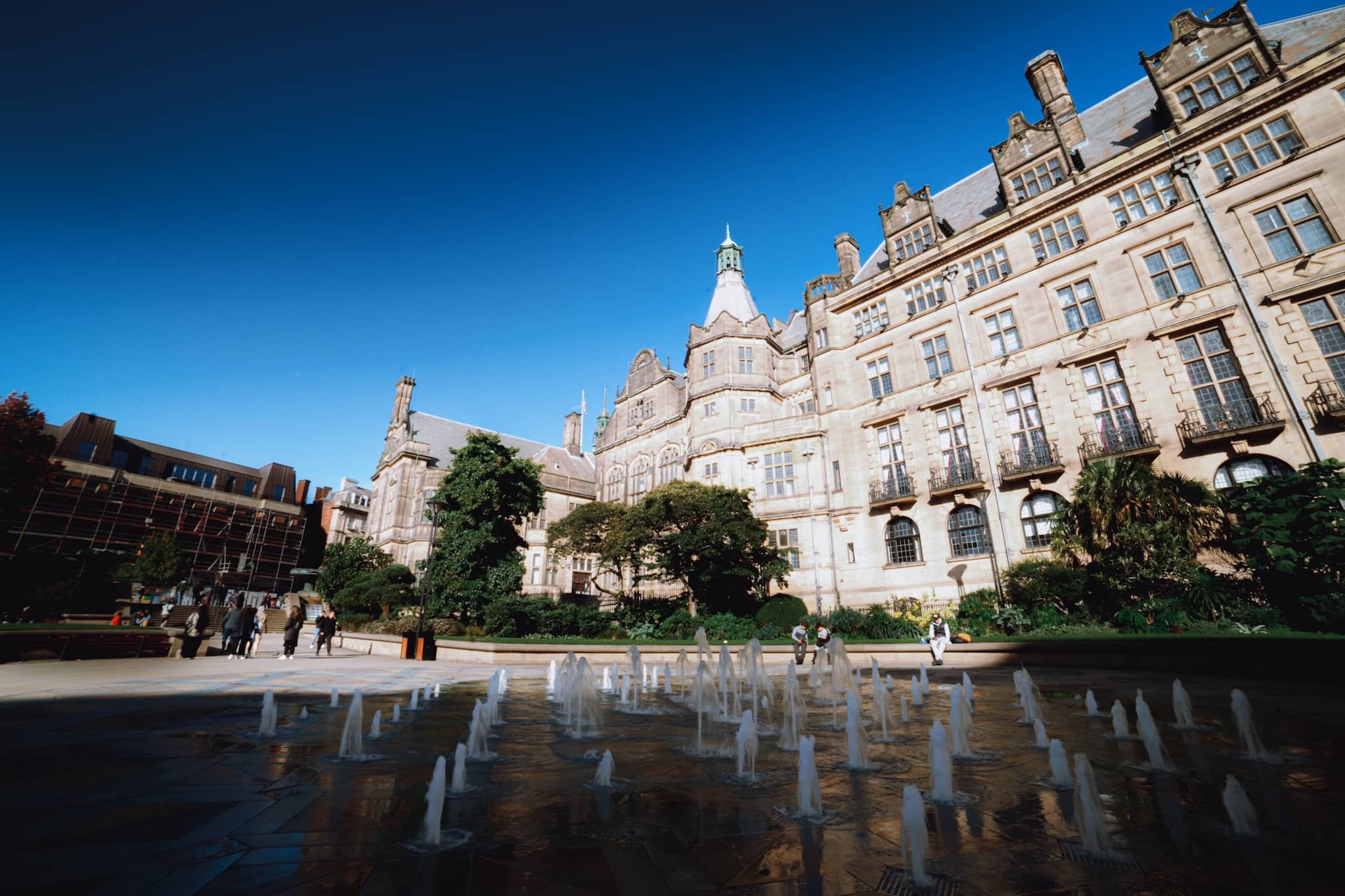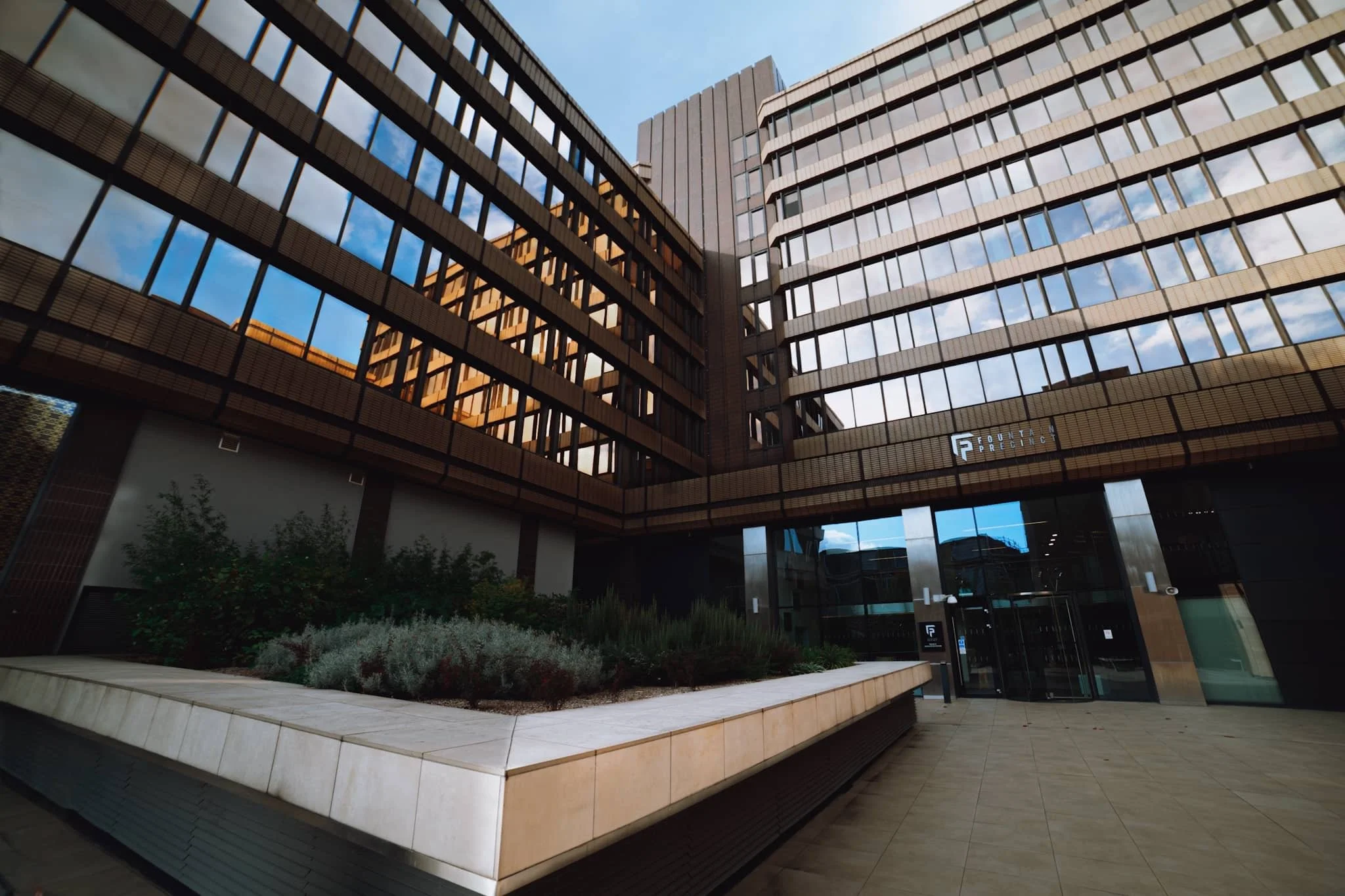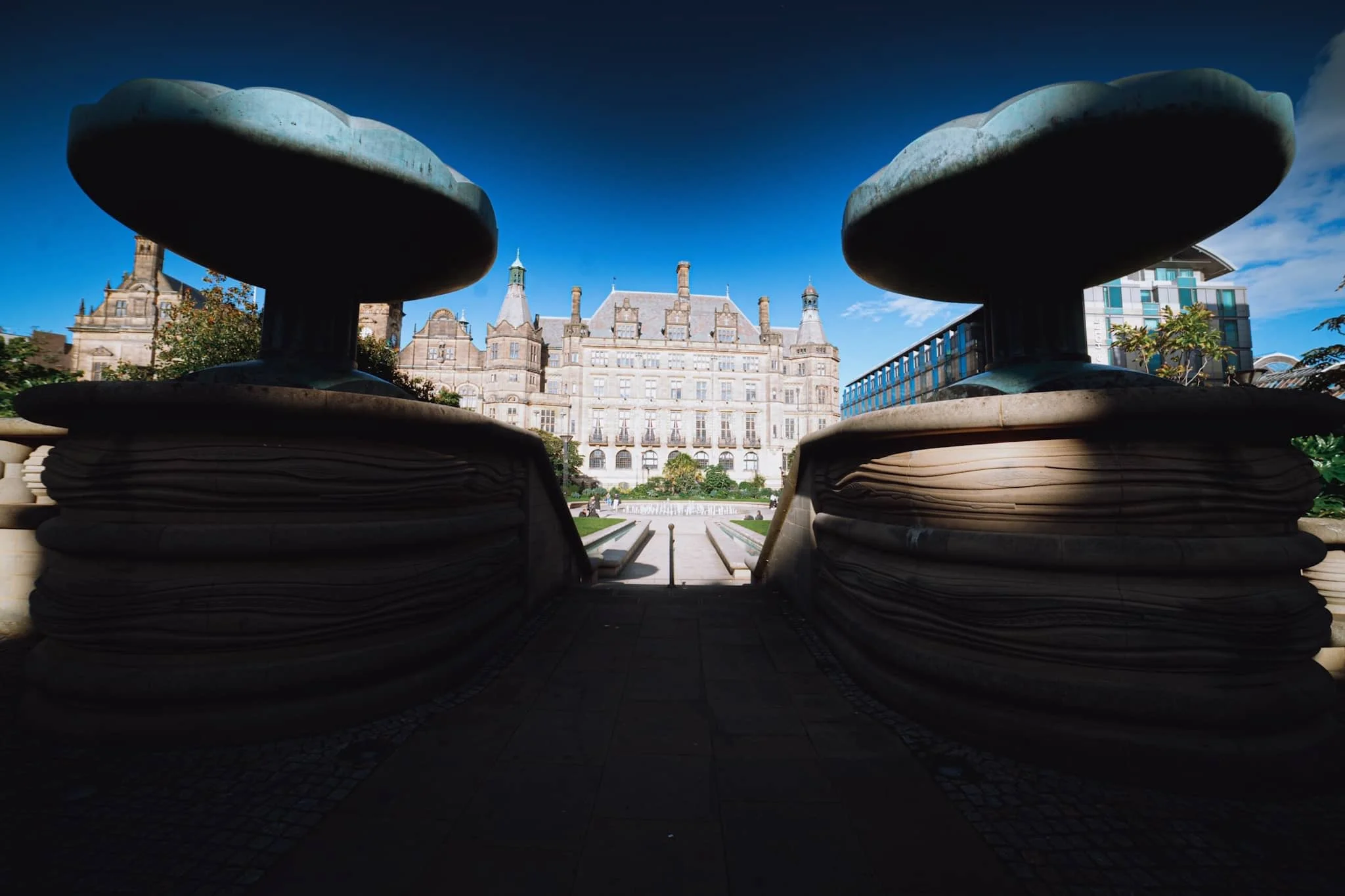Durham, County Durham, Autumn
My first time in Durham.
My first time in Durham.
On the day of our anniversary proper, we woke up nice and early for a full day exploring the historical city of Durham.
I’d never visited the city before. Durham didn’t let me down. The day was bright and clear, bouncing golden light off Durham’s architecture, both modern and ancient.
Though our itinerary was kinda loose, a definite desire was to explore the epic Durham Cathedral, part of a UNESCO World Heritage site with Durham Castle.
Though our day was unfortunately cut short as I unexpectedly developed a stomach bug, what we did manage to see inspired to visit again.
All photos taken on my Sony α7ii using my Pentax SMC 28mm F3.5 and Rokinon 14mm f2.8 ED AS IF UMC prime lenses. RAWs were developed in Lightroom using Cobalt Image’s Sony profiles, with extra help from Photoshop and Photomatix.
Durham, County Durham, Autumn by Ian Cylkowski is licensed under CC BY-NC-SA 4.0
A weir at the River Wear. Clear and low autumnal light makes Durham’s buildings glow gold.
I moved into the shadows on Saddler Street, so I could pick out my compositions where the golden autumnal light was landing in interesting places. Saddler Street is one of Durham’s older roads, originally called Saddlergate.
Branching off Saddler Street is Elvet Bridge. There are numerous little “vennels”, or alleyways, that branch off Elvet Bridge. This was, Drury Lane, was home to a particularly picturesque cafe that we stopped for a brew at. I had to record this ridiculously timeless scene.
Soon we headed towards our main destination of the day: the massive Durham Cathedral, standing tall since the 11th century.
You enter the cathedral first via the Galilee Chapel. Constructed in 1170 CE, this part of the cathedral now serves as the resting place of St. Bede. Saint Bede (673-735) was an English monk and scholar renowned for his work Historia ecclesiastica gentis Anglorum, which provides invaluable insight into the history of Britain and the spread of Christianity among the Anglo-Saxon tribes.
After sorting out our entrance, we paid for the tower climb. Here you can ascend all 325 steps, 218 ft, to enjoy some immense views over Durham. I felt like a drone taking these photos! This is the view looking east.
The other side of the Central Tower gave us more extensive views looking west, pops of autumn colour here and there.
The nave of the cathedral, with its central ribbed vault obscured by the lighting fixtures assembled for an upcoming light show. The nave wouldn’t have looked much different compared to 900 years ago, except their wouldn’t be any seating.
Home to the Cathedra, the choir stalls, the organ, and the high altar, the Quire is where daily worship takes place.
This is the South Transept, from where you would access the Central Tower and climb its 325 steps. It features the Prior’s clock, constructed by Prior Castell in the late 15th or early 16th century.
The High Altar in the Quire. This would’ve been one of the earliest parts of cathedral to be constructed. Monks in the 11th century were seeking a place to hide from Vikings raids as they carried the relics of Saint Cuthbert.
The Chapel of the Nine Altars, built in the 13th century to accommodate the increasing number of pilgrims visiting the cathedral. Since St. Cuthbert’s shrine was seated here, Durham Cathedral has been an important place of worship for Christian pilgrims for centuries.
The Bishop’s Throne, built by Bishop Thomas Hatfield in the 14th century, with his tomb below it.
The light and stained glass windows around the Chapel of the Nine Altars was just astounding.
From around the Cloister, made more famous in modern times as one of the filming sets in the Harry Potter movies.
This is the Monks’ Dormitory, completed around 1404, and nowadays is home to the Cathedral Library, part of Durham Cathedral Museum. This was originally built as sleeping quarters for the Durham Priory monks.
The museum was truly fascinating and, much like the Faith Museum in Bishop Auckland, contained artefacts of faith and religious importance in the area from beyond Roman Times. This place lead to the Great Kitchen, which now houses a sacred part of the museum: Saint Cuthbert’s treasures and coffin.
Kingsgate Footbridge, completely resplendent in autumn colours. Our next goal was to locate the riverside footpath and take a wander along the river bend.
University boat racing was alive and well on the river as the sun began to set.
The woodland deep in the gorge was filled to the brim with incredible autumn colours.
From Prebends Bridge, the boat racing was in full flow, surrounded by vivid autumn foliage.
Putting Prebends Bridge in context of the river, the setting sun bursting from just above the trees.
And finally, Durham Cathedral from the riverside, catching the last of the light and glowing bright.
Did you enjoy these photos?
Sheffield, South Yorkshire, Autumn
I don’t visit cities enough.
I don’t visit cities enough.
And with staying in the Peak District, we found an opportunity to get on the (extremely busy) train for a day out in Sheffield.
I’d never been to Sheffield before.
What I found was a beautiful city centre, bustling with excitement, development, diverse cultures, delicious food, friendly faces, and wonderful architecture.
I guess it’s probably easy to overlook Sheffield in the face of Manchester or Leeds, but the city had a lot to offer.
And certainly, from a photographic perspective, plenty of fun compositions and buildings to play around with.
All photos taken on my Sony α7ii using my Rokinon 14mm f2.8 ED AS IF UMC ultra-wide angle lenses. RAWs developed and edited in Lightroom for iPad, with a little finalising in Darkroom for iPad.
Sheffield, South Yorkshire, Autumn by Ian Cylkowski is licensed under CC BY-NC-SA 4.0
The first thing that struck us after stepping out of Sheffield Station was Sheaf Square and its wonderful cascades of water. This instantly got me into the “ultra-wide” mindset, and I started snapping compositions.
There was a lot of development happening around Sheffield city centre. This, however, did not detract from the already excellent architecture. These lovely buildings are called the Hubs. Originally built in 2001 to house the National Centre for Popular Music, they were eventually bought by Sheffield Hallam in 2004 and repurposed as the new Hallam Students’ Union building.
This arresting building is, in fact, a car park. Q-Park Charles Street car park was built in 2008, designed by Allies & Morrison, it has “affectionately” been given the nickname “the Cheesegrater”. I think it’s wonderful.
Between Norfolk Street and St. Paul’s Place, this narrow walkway between two buildings allowed a very stark and simple composition towards the Cheesegrater.
Similarly, this composition down St. Paul’s Parade towards the City Lofts also deserved to be captured.
Our first stop of the day were the Peace Gardens. Originally laid out in 1938, they were extensively re-modelled in 1997 to include water features and a central fountain. I immediately zoned in on the fountain, waiting for the water to rise up sufficiently high. I then stopped down to f/22 to get as long an exposure as I could, and framed the impressive 19th century gothic Sheffield Town Hall.
Channels of water line the footpaths around the gardens. They represent the rivers of Sheffield, which were crucial to powering Sheffield’s steel industry in the centuries gone by.
Into the Millennium Square is the entrance to the Sheffield Winter Gardens building. This fabulous piece of architecture features arches of Glulam, that is, Glue Laminated Timber.
The Sheffield Winter Garden is one of the largest temperate glasshouses to be built in the UK in the last 100 years. It’s also the largest urban glasshouse anywhere in Europe.
This place is home to more than 2,000 plants from around the world. Incorporated is the Building Management System, which controls fans and vents to make sure the plants are cooled in summer and kept warm in winter. The system learns year after year.
Our next stop was Sheffield Cathedral. The earliest parts of the cathedral date from the 1200s, with newer constructions (such as on the left in this photo) built in the 1960s.
Entering the cathedral, my attention is drawn upwards to the beautiful abstract pattern in the Lantern Tower. An opportunity to practice composing photos whilst looking straight up.
The nave of the cathedral, probably built in the latter part of the 18th century. A truly grand place.
These 3-metre high wings, Solace Angel Wings, are on display until November 2023. Made up of 100 glass feathers. They serve as a symbol of freedom, unity, and strength. People are encouraged to pose in between the wings, so they too can be angels.
After lunch, we continued wandering around the city centre. Here, Chaps Fountain gave me a lovely image looking towards Sheffield City Hall.
The Fountain Precinct building, built in the 1970s. It primarily offers corporate and office space for businesses. Here, its glass panes caught some beautiful late afternoon light.
Another place we wanted to check out was Sheffield’s Roman Catholic Cathedral, the Cathedral Church of St Marie. It’s home to Sheffield’s tallest spire, at 195 ft tall. When Catholicism was allowed to be openly practised again in England, this building was constructed in the mid-19th century.
Back to the Peace Gardens for one last composition.







